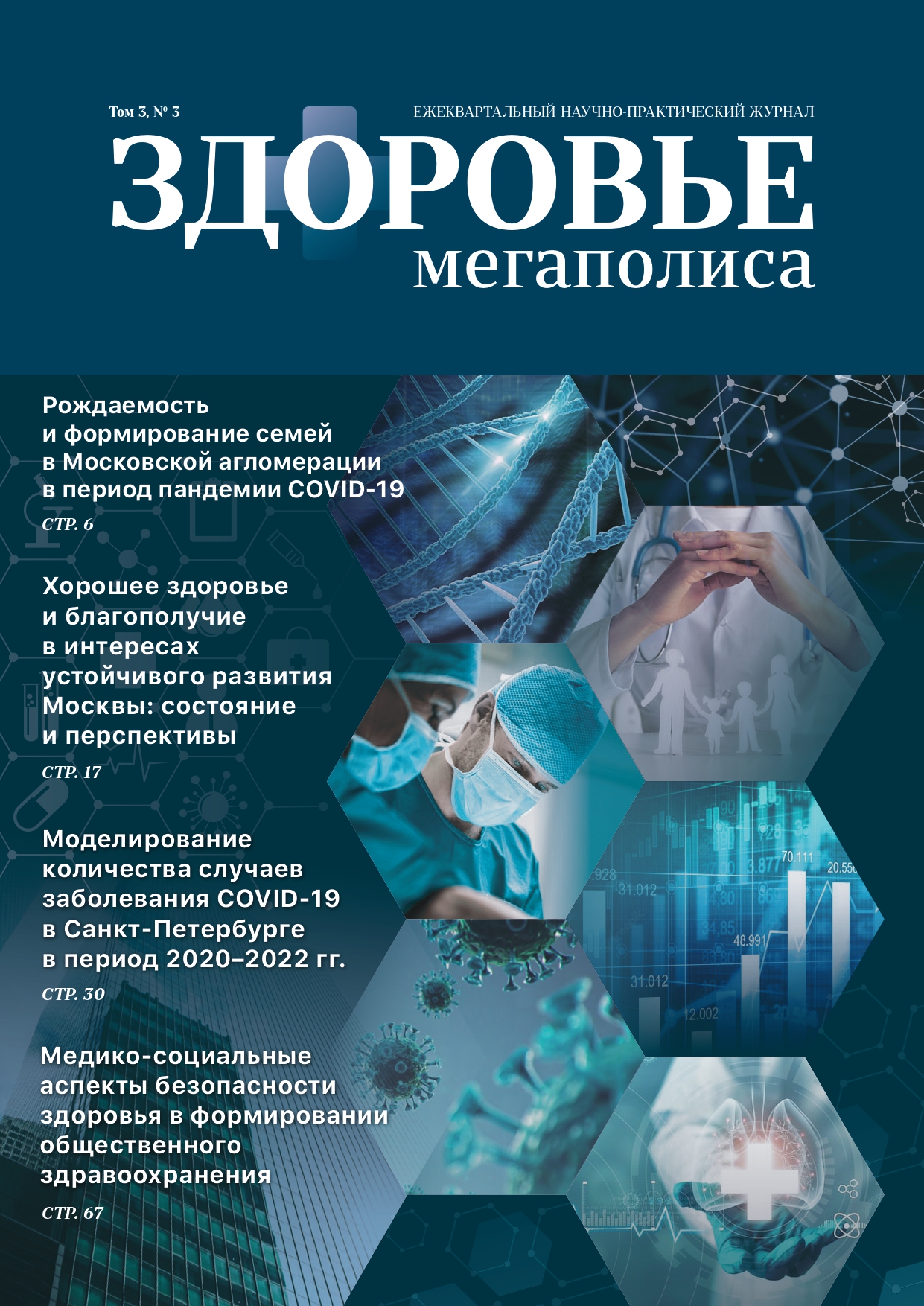Abstract
The article analyzes changes in fertility and marriage rates in the Moscow agglomeration in 2020–2022. The choice of the Moscow agglomeration as an object is due to the significant influence of the share of nonresident births in Moscow on birth rates in Moscow and the Moscow region, which should be, to some extent, eliminated in order to correctly assess the impact of other factors. In 2020, due to the COVID-19 pandemic, marriage
rates dropped significantly, especially for first marriages. A likely consequence of this was that the increase in the total fertility rate for first births in 2021 was very small, but for second and third and subsequent births was substantial. It can be assumed that the negative impact of the decline in marriage rates in 2020 on first births in 2021 was partially offset by the positive impact of the start of the maternity (family) capital for the first child. Combined with the effect of this factor, the increase in marriage rates in 2021 may have contributed to higher fertility rates for first births in the first half of 2022, while they declined for second and third and subsequent births. In addition to its effect on the decline in the number of marriages in 2020 and its indirect effect on first births, the initial period of the pandemic probably had an effect on the significant decline in the number of births in the Moscow agglomeration in January and February 2021.
For citation: Arkhangelskiy V. N., Zayko Е. S. Fertility and Family Formation in the Moscow Agglomeration during the COVID-19 Pandemic City Healthсare. 2022;3(2):6–16 doi: 10.47619/2713-2617.zm.2022.v.3i3;6–16
Полный текст
Список литературы
1) Rostovskaya, T. K. Toolkit for conducting an in-depth interview to study the intrinsic mo-tivation of reproductive, matrimonial, self-preserving and migratory behavior / T. K. Rostovskaya, E. N. Vasilyeva, E. A. Knyazkova // Management issues. – 2021. – No. 1 (68). – P. 103-117. – DOI 10.22394/2304-3369-2021-1-103-117. – EDN CGPHOI.
2) Kulkova, I. A. The impact of the coronavirus pandemic on demographic processes in Rus-sia / I. A. Kulkova // Human Progress. – 2020. – V. 6. – No. 1. – P. 5. – DOI 10.34709/IM.161.5. – EDN FYXRMX.
3) Bessonova, L. P. The coronavirus pandemic and its impact on demographic processes and quality of life in Russia // Human Progress. 2020, V. 6, Issue 4. P. 3. URL: http://progress hu-man.com/images/2020/Tom6_4/Bessonova.pdf, free. DOI 10.34709/IM.164.3
4) Mingazova, E. N. Features of the reproductive and demographic process in economically developed countries in the context of the COVID-19 pandemic (review of foreign literature) / E. N. Mingazova, I. A. Tliashinova // Problems of social hygiene, public health and the history of medi-cine. – 2022. – V. 30. – No. 2. – P. 185-194. – DOI 10.32687/0869-866X-2022-30-2-185-194. – EDN PBRGTA.
5) Seredkina, E. A. Fertility trends in developed countries during the COVID-19 pandemic / E. A. Seredkina // Demographic Review. – 2022. – V. 9. – No. 1. – P. 109-146. – DOI 10.17323/demreview.v9i1.14576. – EDN KBAFVA.
6) Zolotareva, O. A. Mortality and birth rate in Moscow: assessment in the context of losses from the pandemic / O. A. Zolotareva, A. V. Tikhomirova // Development of territories. – 2021. – No. 4 (26). – P. 73-78. – DOI 10.32324/2412-8945-2021-4-73-78. – EDN UYBAJC.
Файлы
Статистика
Просмотры аннотации: 518
Просмотры XML: 1
Просмотры PDF: 340
Всего: 859
